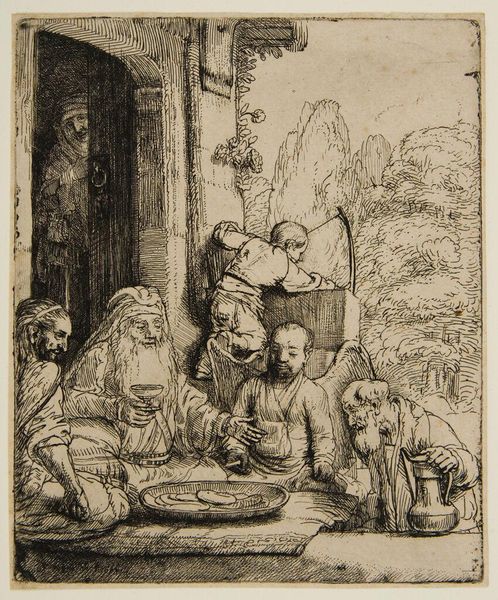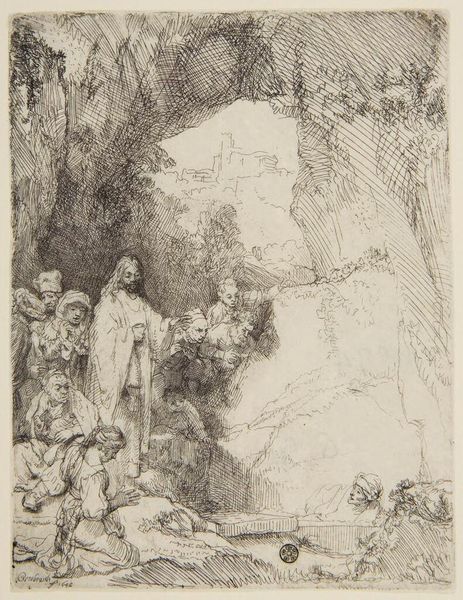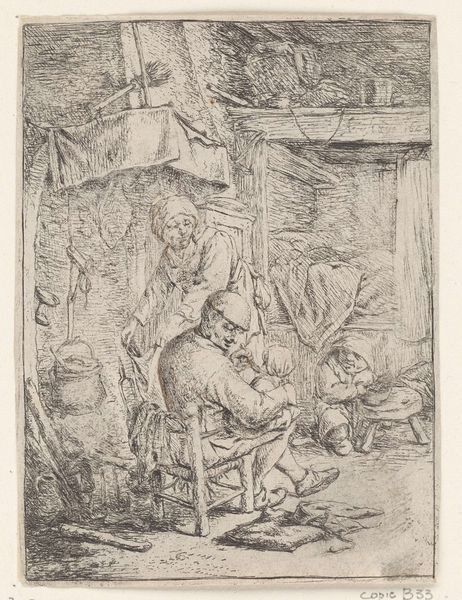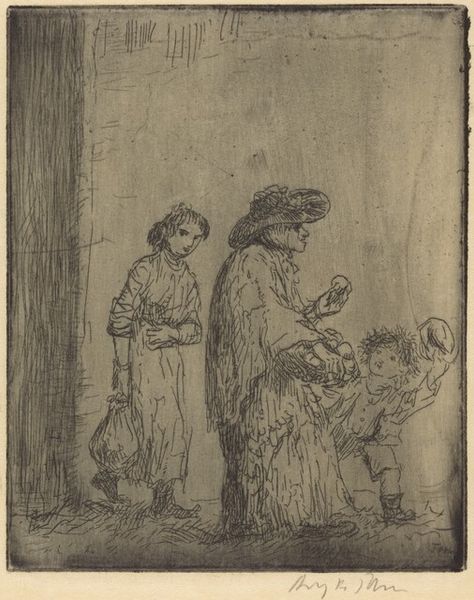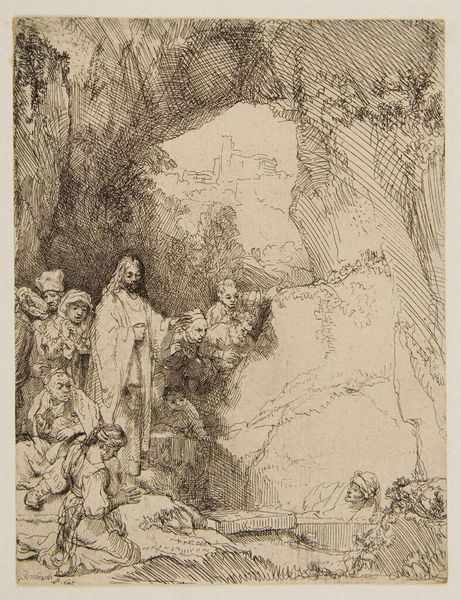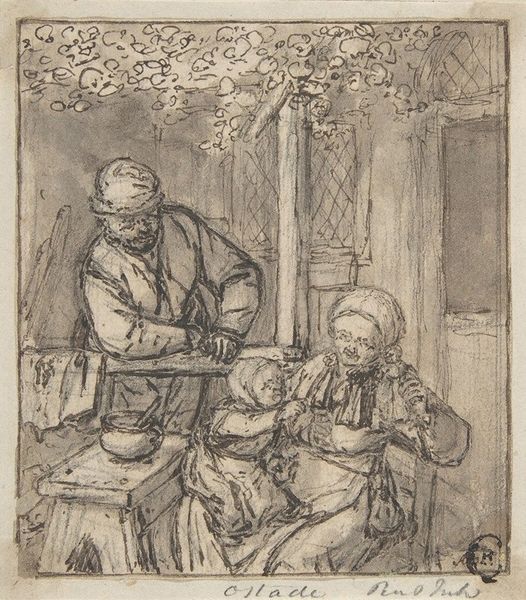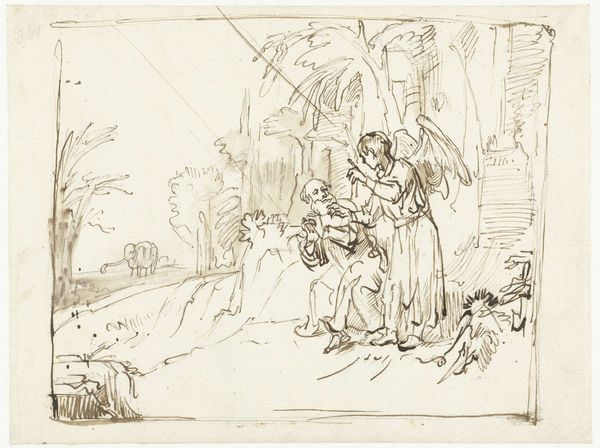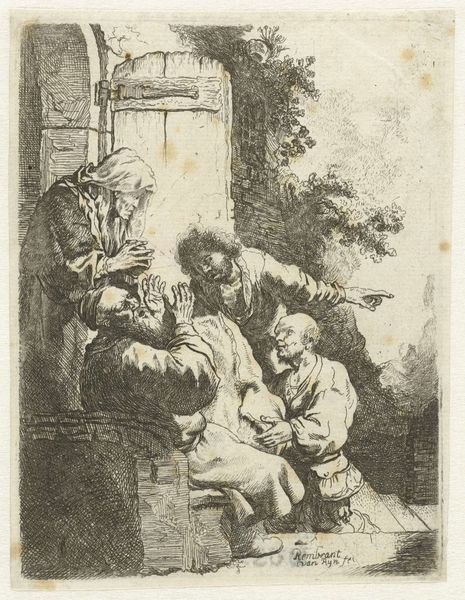
drawing, print, etching
#
drawing
#
narrative-art
#
baroque
# print
#
etching
#
figuration
Copyright: Public Domain: Artvee
Curator: This etching by Rembrandt van Rijn, completed in 1656, depicts "Abraham Entertaining the Angels," a well-known biblical scene. Editor: The immediate impression is one of intimate, domestic drama—a feeling intensified by the somewhat shadowy rendering. Curator: Absolutely. Rembrandt captures a profound moment in Genesis. Abraham, an elderly man, welcomes three strangers, unaware they are angels sent by God to tell him that his wife Sarah will bear a son. It’s charged with symbolic weight. Notice Abraham holding up his cup, almost a toast to this incredible news. Editor: And what's particularly fascinating about this depiction is Rembrandt’s attention to the mundane details of the domestic sphere alongside the grand religious narrative. Look at the child perched on the wall in the background. What is that telling us about societal context and artistic intention at the time? Curator: I think the child gives a visual counterpoint. We’re seeing not only the divine visit and promise but the generational continuation it signifies, echoed visually in the boy's playful archery. Rembrandt’s composition reminds me that divine promises occur within very human spaces and timelines. And the hidden figure partially visible in the darkened doorway on the left...it looks like Sarah, the mother of the expected son. The narrative implication is very clever, very subtle, and emotionally evocative. Editor: The play of light and shadow contributes significantly to the scene's power. He’s truly a master of chiaroscuro, focusing light upon figures like Abraham to emphasize emotional moments or inner awareness, as opposed to merely demonstrating a skill in mimesis or academic correctness. It adds intensity to the revelation itself, in my view, heightening this depiction of expectation. How interesting also, to consider the institutional demand and financial backing for the Baroque sacred images at the time this print was produced. Curator: True. Rembrandt was keenly attuned to the artistic climate. He imbues biblical narratives with the intense humanity that was highly appreciated by both public and private patrons. So, what began for me as an observation on human symbolism, really took a fascinating turn for you into how artistic expression functions and finds a place in our public consciousness. Thank you for highlighting that. Editor: And your mention of subtle symbolism made me further think about the profound potential held by even commonplace events—the visitor who arrives without fanfare or an unexpected blessing—to change history. A brief exploration of this humble print leads to profound thoughts about how our own lives intersect with the turning wheel of fate and history.
Comments
rijksmuseum about 2 years ago
⋮
The aged Abraham and Sarah were still childless when three travellers visited them. While they were eating, one of them revealed himself as the Lord and prophesied that Sarah would soon give birth. Here we see her listening from behind the door. Abraham, in the right foreground, hears the glad tidings and bows humbly on realizing who his guests are.
Join the conversation
Join millions of artists and users on Artera today and experience the ultimate creative platform.

